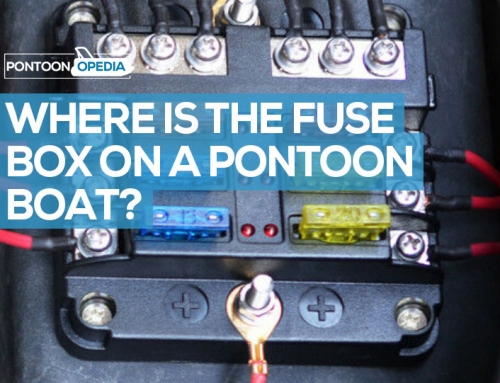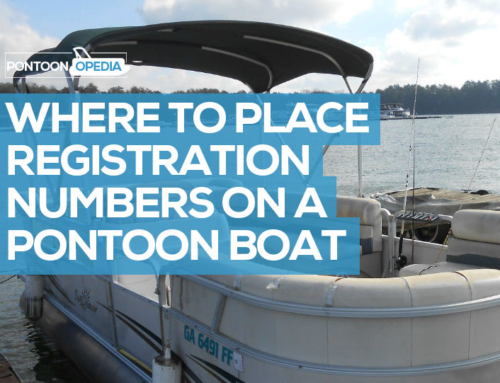If you’ve just bought your first pontoon anchor, then you’re going to want to know where to place and position it, so you can reduce drift and get your boat properly secured to the bottom of the lake or river.
As you can probably imagine, there are some best practices that you should follow, as it’s not just a case of dropping it out in the water. That’s the worst way to anchor up a boat.
So, what’s the best location you should choose and how do you do it?
I always anchor off the front of my pontoon boat, whether I am using a winch or not.
But why?
It’s because I use a 12-pound mushroom anchor designed for mud and sand and I want to get it to grab into the sand or mud securely.
By dropping anchor from the front, you can get your boat into the best position and location, then get the anchor it secured properly, and here’s how.
Best Location for a Pontoon Anchor
You want to position your pontoon boat location so it’s facing into either the wind, or the water current. Whichever is strongest is what you point your nose towards.
By doing so, you help to ensure that your anchor chain and line to drag through the silt, sand, or mud, and want to stay in one spot.
Once in position you start to slowly move into the current or wind – remember, whichever is strongest offering the most resistance!
Next figure out how deep the water is, and you can use a depth finder for this purpose. In real simple terms you want to have five times as much rope length as the depth of the water.
With the anchor secured to the cleat and your boat location facing into the strong wind or current, you stop your pontoon, but the engine into idle, and slowly drop the anchor into the water.
Due to the current or wind, your pontoon should now start to drift backwards. Your anchor will move down through the water at an angle, with the teeth having the best chance of catching onto the bed.
Place the engine into reverse and slowly start to back-up as you release more and more of the anchor line. You should start to feel tension in the rope, getting taut once you are in position and the anchor is properly secured into the mud or sand.
All that’s left is to secure your anchor to the cleat, wrapping it twice.
Now simply leave your pontoon engine in idle reverse mode.
To see this process in action a really simple and quick way, take a look at the video below.
But I Am Still Drifting!
In very strong winds and currents you might find that your pontoon boat drifts from side to side, and you might even experience some spinning on the single anchor.
In cases like this, you might also want to position your pontoon anchor at the rear location too, but only do that once you have the front anchored down.
If the wind direction changing constantly, you might even have to chance the anchoring points completely, but with 2 anchors at the fore and aft locations, you should be pretty secure.
But I Have an Under the Deck Anchor!
If you are using a under deck pontoon anchor, then the decision has already been made for you.
However, you might still want to also anchor from another location on your pontoon boat if you are still drifting in very strong winds and currents.
If that’s the case, follow the initial advice in this pontoon boat anchor location guide.
But I Have Anchor Winches!
The anchor location can change if you’re using an electric winch.
There two main locations where the winch should be best located, and those would be either the fore (front) or aft (rear) of your boat.
Many pontooners will argue until they are blue in the face, that the winch should be as close to the battery as possible. I understand that, as it reduces the work you have to do in wiring.
But… if you feel that the winch is going to better placed at the opposite end of your boat, away from the battery due to layout and positioning, then take the extra time to run a longer wire.
How to Install an Anchor on a Pontoon Boat
For more information on installation, including winches and mounts, I recommend that you read my guide to pontoon anchor winches elsewhere on Pontoonopedia.
You can click here to read the install guide or use the handy search function in the side bar.






